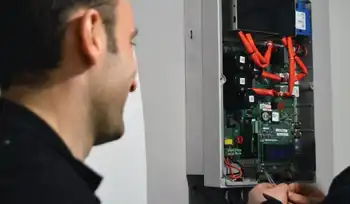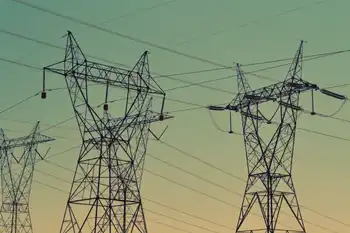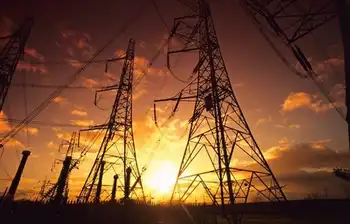New York Achieves Solar Energy Goals Ahead of Schedule

High Voltage Maintenance Training Online
Our customized live online or in‑person group training can be delivered to your staff at your location.

- Live Online
- 12 hours Instructor-led
- Group Training Available
New York Solar Milestone accelerates renewable energy adoption, meeting targets early with 8,000 MW capacity powering 1.1 million homes, boosting green jobs, community solar, battery storage, and grid reliability under the CLCPA clean energy framework.
Key Points
It is New York achieving its solar goal early, powering 1.1M homes and advancing CLCPA renewable targets.
✅ 8,000 MW installed, enough to power about 1.1M homes
✅ CLCPA targets: 70 percent renewables by 2030
✅ Community solar, storage, and green jobs scaling statewide
In a remarkable display of commitment to renewable energy, New York has achieved its solar energy targets a year ahead of schedule, marking a significant milestone in the state's clean energy journey, and aligning with a national trend where renewables reached a record 28% in April nationwide. With the addition of solar power capacity capable of powering over a million homes, New York is not just setting the pace for solar adoption but is also establishing itself as a leader in the fight against climate change.
A Commitment to Renewable Energy
New York’s ambitious clean energy agenda is part of a broader effort to reduce greenhouse gas emissions and transition to sustainable energy sources. The state's goal, established under the Climate Leadership and Community Protection Act (CLCPA), aims for 70% of its electricity to come from renewable sources by 2030. With the recent advancements in solar energy, including contracts for 23 renewable projects totaling 2.3 GW, New York is well on its way to achieving that goal, demonstrating that aggressive policy frameworks can lead to tangible results.
The Numbers Speak for Themselves
As of now, New York has successfully installed more than 8,000 megawatts (MW) of solar energy capacity, supported by large-scale energy projects underway across New York that are expanding the grid. This achievement translates to enough electricity to power approximately 1.1 million homes, showcasing the state's investment in harnessing the sun’s power. The rapid expansion of solar installations reflects both increasing consumer interest and supportive policies that facilitate growth in the renewable energy sector.
Economic Benefits and Job Creation
The surge in solar energy capacity has not only environmental implications but also significant economic benefits. The solar industry in New York has become a substantial job creator, employing tens of thousands of individuals across various sectors. From manufacturing solar panels to installation and maintenance, the job opportunities associated with this growth are diverse and vital for local economies.
Moreover, as solar installations increase, the state benefits from reduced electricity costs over time. By investing in renewable energy, New York is paving the way for a more resilient and sustainable energy future, while simultaneously providing economic opportunities for its residents.
Community Engagement and Accessibility
New York's solar success is also tied to its efforts to engage communities and increase access to renewable energy. Initiatives such as community solar programs allow residents who may not have the means or space to install solar panels on their homes to benefit from solar energy. These programs provide an inclusive approach, ensuring that low-income households and underserved communities have access to clean energy solutions.
The state has also implemented various incentives to encourage solar adoption, including tax credits, rebates, and financing options. These efforts not only promote environmental sustainability but also aim to make solar energy more accessible to all New Yorkers, furthering the commitment to equity in the energy transition.
Innovations and Future Prospects
New York's solar achievements are complemented by ongoing innovations in technology and energy storage solutions. The integration of battery storage systems is becoming increasingly important, reflecting growth in solar and storage in the coming years, and allowing for the capture and storage of solar energy for use during non-sunny periods. This technology enhances grid reliability and supports the state’s goal of transitioning to a fully sustainable energy system.
Looking ahead, New York aims to continue this momentum. The state is exploring additional strategies to increase renewable energy capacity, including plans to investigate sites for offshore wind across its coastline, and other clean energy technologies. By diversifying its renewable energy portfolio, New York is positioning itself to meet and even exceed future energy demands while reducing its carbon footprint.
A Model for Other States
New York’s success story serves as a model for other states aiming to enhance their renewable energy capabilities, with its approval of the biggest offshore wind farm underscoring that leadership. The combination of strong policy frameworks, community engagement, and technological innovation can inspire similar initiatives nationwide. As more states look to address climate change, New York’s proactive approach can provide valuable insights into effective strategies for solar energy deployment.
New York’s achievement of its solar energy goals a year ahead of schedule is a testament to the state's unwavering commitment to sustainability and renewable energy. With the capacity to power over a million homes, this milestone not only signifies progress in clean energy adoption but also highlights the potential for economic growth and community engagement. As New York continues on its path toward a greener future, and stays on the road to 100% renewables by mid-century, it sets a powerful example for others to follow, proving that ambitious renewable energy goals can indeed become a reality.








_1557567480.webp)


